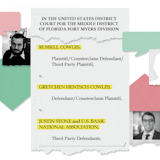A grim new report on veterans who die by their own hand ought to prompt heartbreak and an important question: How can civilians help the U.S. Department of Veterans Affairs (VA) combat this public health tragedy?
The VA has understandably spearheaded the nation's efforts to prevent suicide among those who have served. A new report released by the federal agency earlier this month not only makes clear how difficult this vital mission is, it also suggests that the VA needs reinforcements. Despite growing awareness of suicide risks, and the VA making prevention a "top clinical priority," the death toll continues to rise. In 2017, the most recent year for which statistics are available, 6,139 veterans took their own lives.
That's up from 6,010 in 2016 — not a large increase but a trendline still heading in the wrong direction. Seeing the number top 6,000 yet again is also frustrating. Annual deaths haven't dipped below this threshold since 2007, even as the nation's veteran population shrinks. In 2016, there were 20,170,000 veterans. In 2017, there were 19,803,000, with the subtraction due mainly to the aging of older generations.
That declining number is why the suicide rate has continued to climb over the past decade even as total deaths have remained relatively stable. In 2007, the suicide rate was 18.8 per 100,000 veterans. In 2017, it was 27.7. In comparison, the suicide rate for the general population stood at 18 per 100,000 in 2017.
It may be too soon to gauge whether the VA's more recent, higher-profile prevention efforts are yielding results. Still, the lack of progress underscores the challenge of helping soldiers adjust to life on the homefront while dealing with post-traumatic stress disorder, depression or chemical addiction.
The VA has been criticized by the Editorial Board and others for flaws in its suicide assessments and for failing to swiftly fill mental health staff vacancies, among other concerns. There's still much work to be done, but the agency has begun to leverage its massive resources.
One of its recent strategies merits special praise. The agency is now enlisting state and local leaders in its prevention efforts. Earlier this year, the VA, along with other federal health officials, convened its first "Governor's Challenge to Prevent Suicides Among Service Members, Veterans and Their Families" meeting. The agency also recently held its second annual "Mayor's Challenge" event, which has a similar focus.
The goal of both is to bolster the ranks of those who recognize suicide risks and bring additional resources to the prevention effort. It's a smart idea to expand beyond the VA and generate new ideas. Minnesota was regrettably not one of the 10 states asked by the agency to participate. Nor is there a team representing the state in this year's mayoral-level program. That's a shame because so many Minnesotans have served on the front lines.


